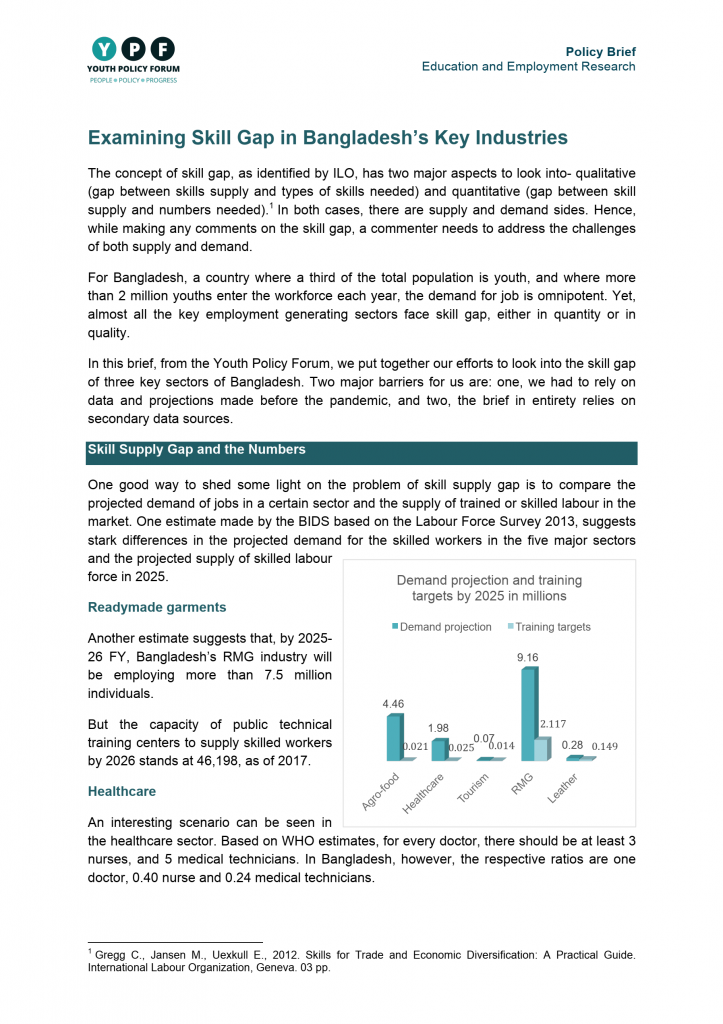Policy Brief: Examining Skill Gap in Bangladesh's Key Industries
August 2020
The concept of skill gap, as identified by ILO, has two major aspects to look into- qualitative (gap between skills supply and types of skills needed) and quantitative (gap between skill supply and numbers needed). In both cases, there are supply and demand sides.
Hence, while making any comments on the skill gap, a commenter needs to address the challenges of both supply and demand.
For Bangladesh, a country where a third of the total population is youth, and where more than 2 million youths enter the workforce each year, the demand for job is omnipotent. Yet,
almost all the key employment-generating sectors face skill gaps, either in quantity or quality.
In this brief, from the Youth Policy Forum, we put together our efforts to look into the skill gap in three key sectors of Bangladesh. Two major barriers for us are: one, we had to rely on data and projections made before the pandemic, and two, the brief in entirety relies on secondary data sources.
About the Author: Aaqib Md Shatil served as the Lead of the Education and Employment Policy Network at the Youth Policy Forum.
